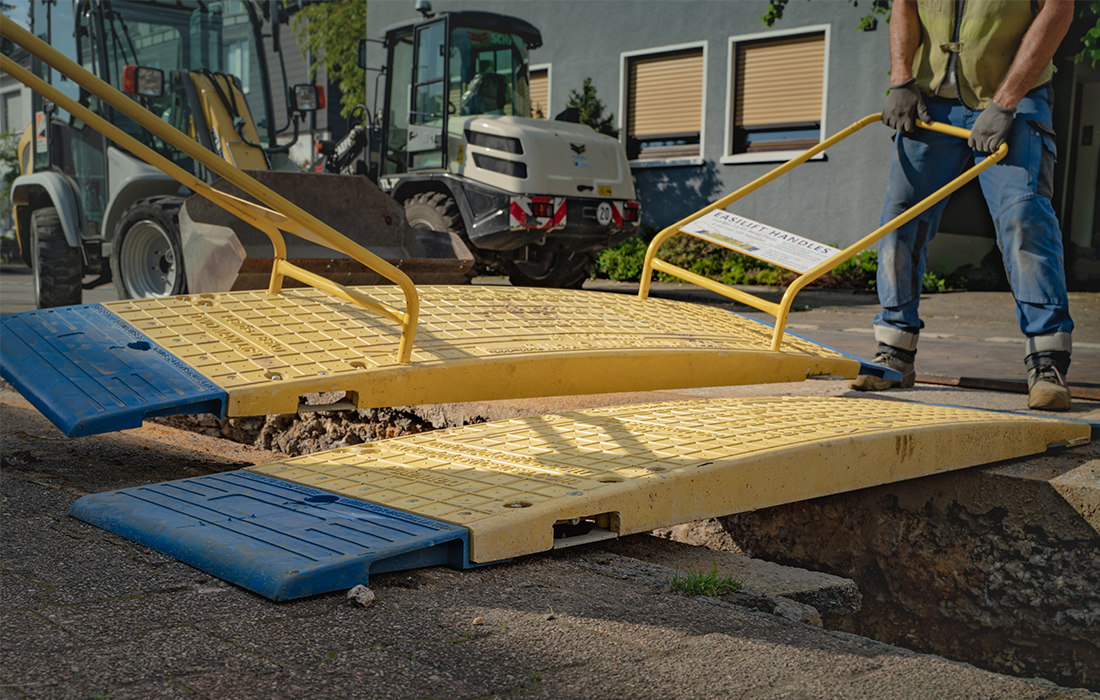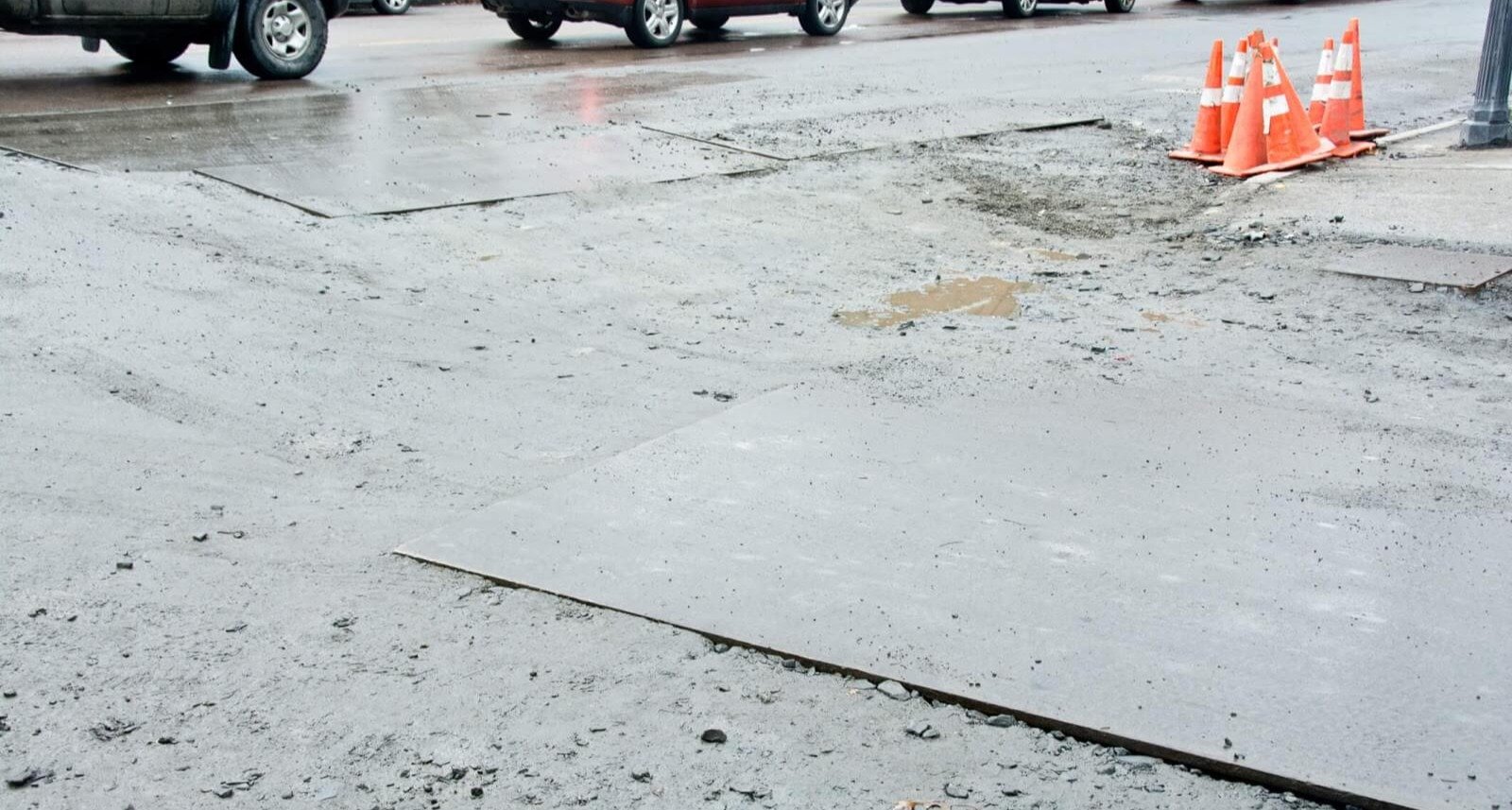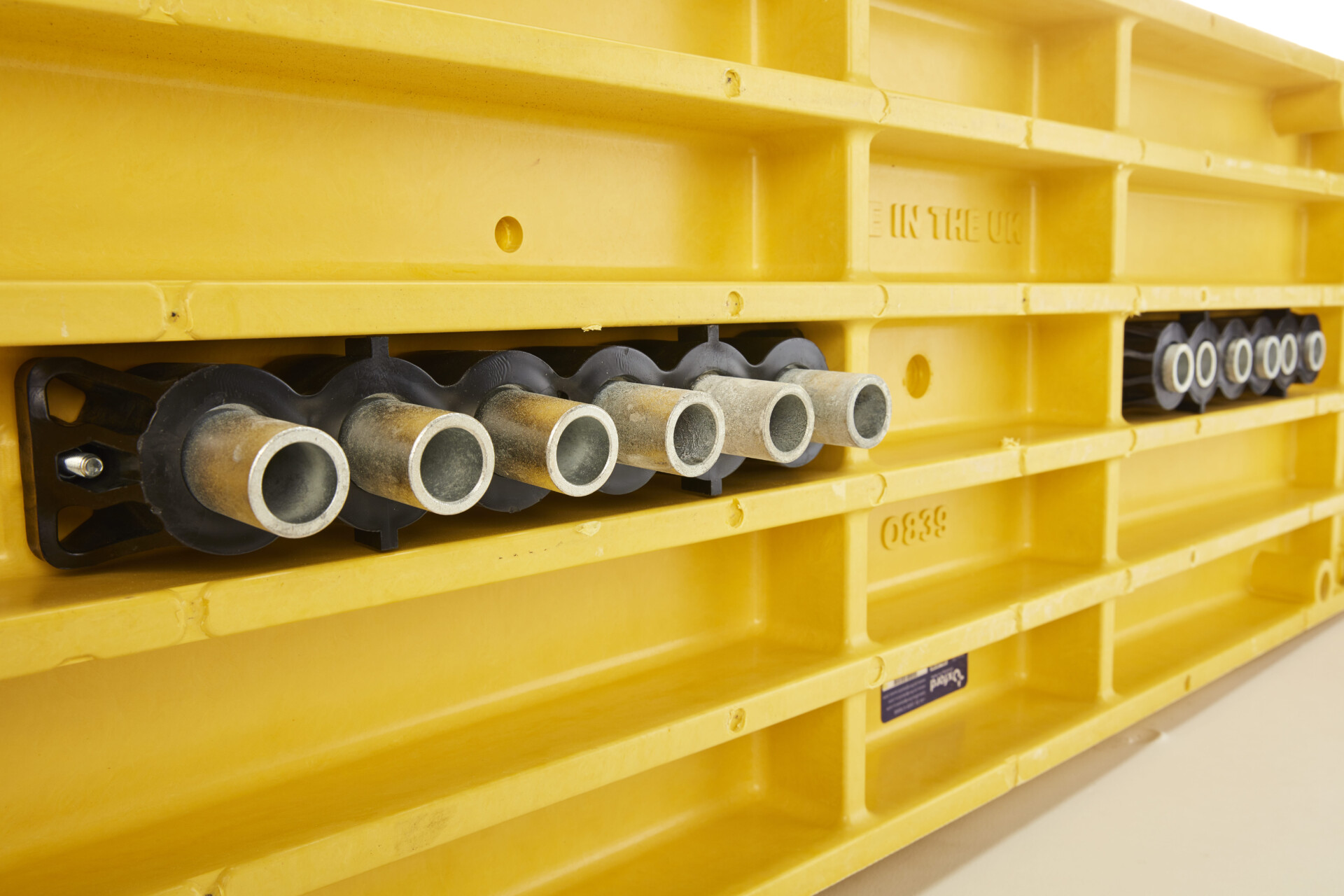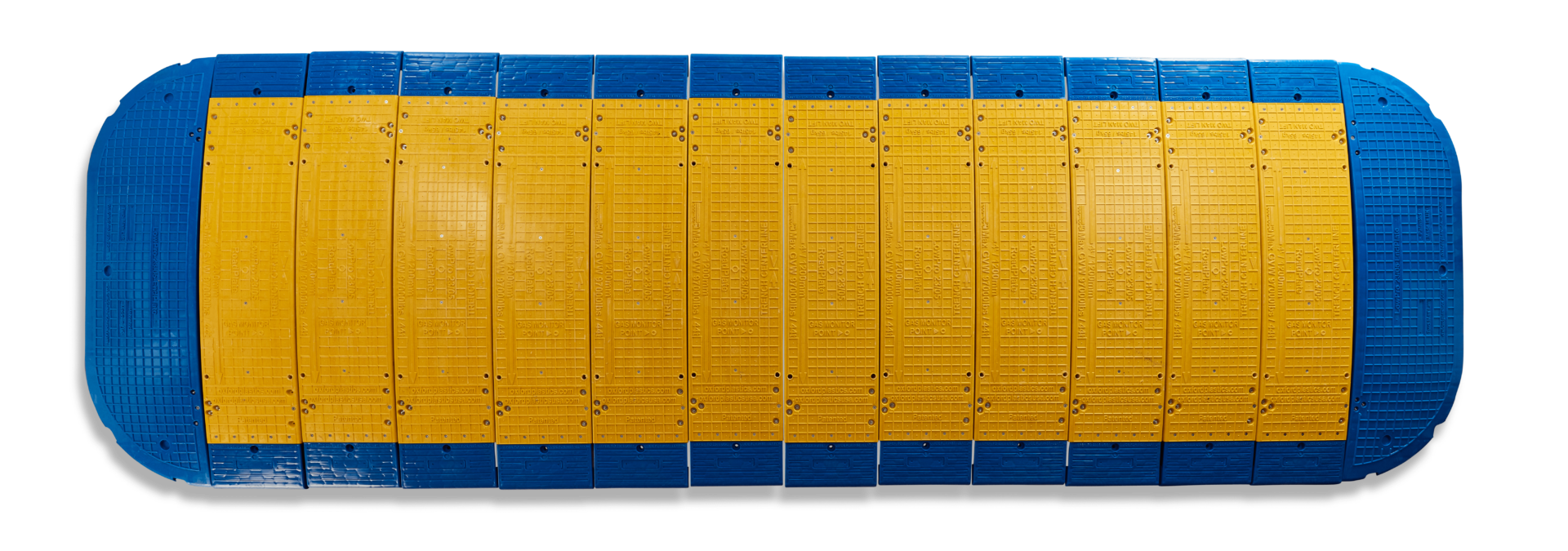Which is safer, more flexible and has a lower total cost of ownership?
Road plates are essential for road safety. They’re used in civil and roading projects to maintain vehicle and pedestrian traffic flow by temporarily covering a trench, hole or other unpassable surface. And although steel plates have been the preferred option in the industry for years, composite road plates are quickly gaining traction as a fast and safe alternative. So, which is the better solution – composite or steel?
From sustainability to safety, here’s how composite versus steel plates compare.
Upfront and operational costs
On-site, time is money – so finding the most cost-effective solution is crucial. Here’s how steel plates compare to composite financially.
Discover why Citycare Water switched from using steel plates to composite plates to save costs and time.
Composite road plates
Although they seem more expensive upfront – between $6,000 and $7,000 for a 4m lane width – composite road plates cut costs in transport and installation. Because of their lighter weight, they can be lifted and installed by two people in as little as 15 minutes – reducing the total labour time and removing the heavy equipment requirement. Plus, with rubber ends, there’s no need for cold mix asphalt, which further speeds up the process.
Because of these efficiencies, some contractors report paying back the plates in just two or three projects. Hear it from a USA contractor who has experienced the saving first-hand.
Steel road plates
The upfront cost of steel plates is relatively affordable – around $3,000 to $3,500 for a 4m lane width. But because they are heavy, they must be transported and unloaded by a Hiab or crane truck and moved with diggers, which means increased time and labour costs. You’ll also need asphalt to create a safe edge for vehicles, adding to the price.
You can expect to pay up to $2,000 on top of the initial plate cost which raises the questions of whether steel plates are the cheaper option.
Strength and durability
Composite road plates
When it comes to strength, composite road plates are incomparable. They’re tested to specific combinations of weight and span and then marked with their approved maximum trench span and weight loads. This protects your workers and reputation – giving you peace of mind as composite plates have been thoroughly tested. And because of their modular design, composite plates also adapt to the curves in the road.
Low-Pro 2300 x 500mm road plates are engineered and tested to handle 44T vehicles over a 1200mm trench span. Watch our safe cover compliance test to see them in action.
Steel road plates
Although they have a reputation for strength, steel road plates can’t handle heavy vehicles for long periods and are prone to bending. And because they don’t have a certified weight rating, their actual weight capacity is unknown, which makes working with them a potential risk. Once installed, steel plates may require additional asphalt to ensure a smooth transition from the plate to the road. This calls for additional maintenance and labour resources post-installation.
User safety
Composite road plates
Our composite road plates have a high-visibility yellow surface to alert motorists, and the speed hump profile helps slow vehicles travelling through the worksite. Using the British Pendulum Test, their anti-slip properties exceed the acceptable standard for pedestrians, cyclists and vehicles to cross safely. Plus, their interlocking system makes them safer to install by two people and eliminates the common safety risk posed by swinging heavy steel plates.
Steel road plates
If they aren’t covered with an anti-slip coating or chequered plate finish, steel plates can be very slippery and unsafe, causing multiple cyclist injuries and fatalities globally. Steel plates are also quite heavy weighing +400kg for a 25ml plate which poses a significant crush-risk. In addition, they must be placed with heavy machinery to support the weight and often requires lift-plans.
Sustainability
Composite road plates
Because they’re made of rubber and fibreglass, our composite road plates offer up to 79% reduction in carbon emissions compared to traditional steel road plates. Plus, they don’t need heavy machinery to place them – which keeps their carbon footprint low.
Steel road plates
Steel products already have high amounts of embodied carbon, and because they’re so heavy, they also need heavy machinery to put them in place – adding to their already big carbon footprint.
Noise control
Composite road plates
Composites have rubber edges that significantly dampen road noise, making them the quieter option and much more suitable for residential areas.
Steel road plates
When people live or work near a site, you want the noise to be kept as low as possible. Steel plates make a loud noise when vehicles go over them – which is not ideal for keeping neighbours happy.
Composite plates vs. steel – which is best?
Although steel road plates have been the only solution in the industry for many years and come with some benefits like strength, they’re time-consuming, and are quickly being outdated. Modular, composite road plates offer a much better solution. They have the strength to withstand heavy vehicle loads of up to 44T and are light enough for two people to lift alone. That means they’re safer, faster and more efficient compared to steel plates, leading to significant ongoing time and cost savings.
Learn more about composite road plates here or contact us on [email protected] to find out how road plates could benefit your next project.





